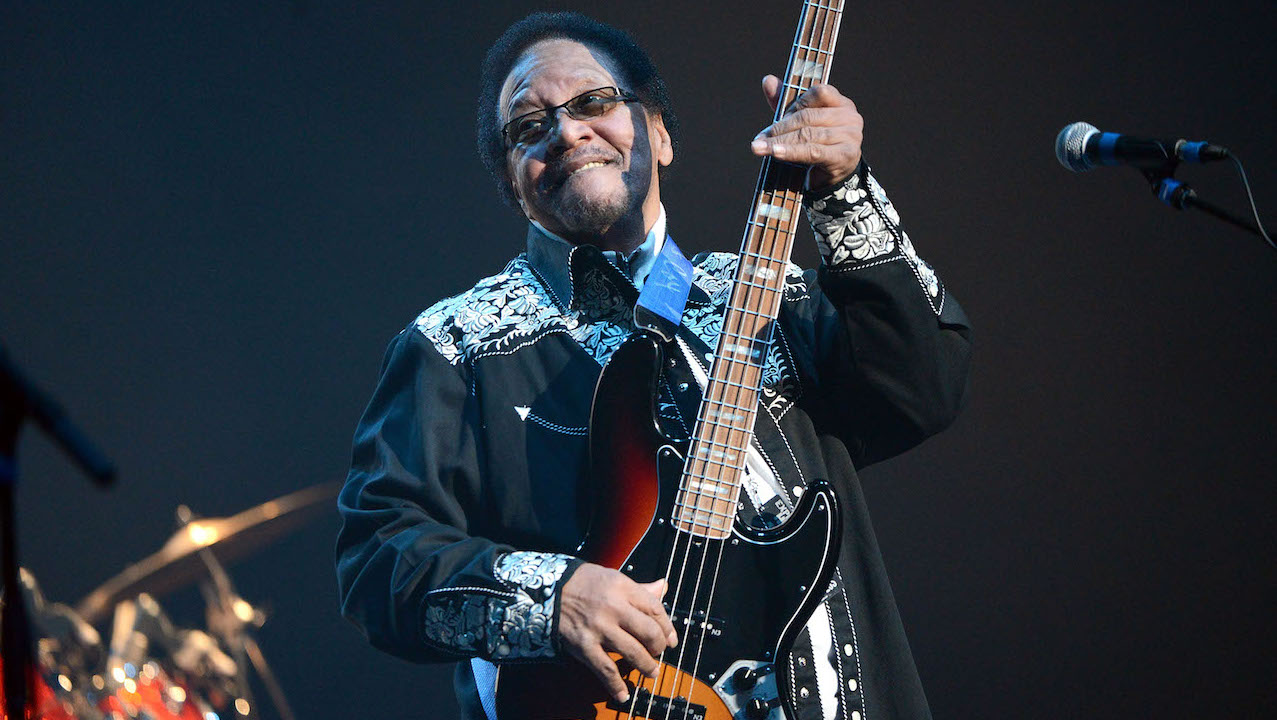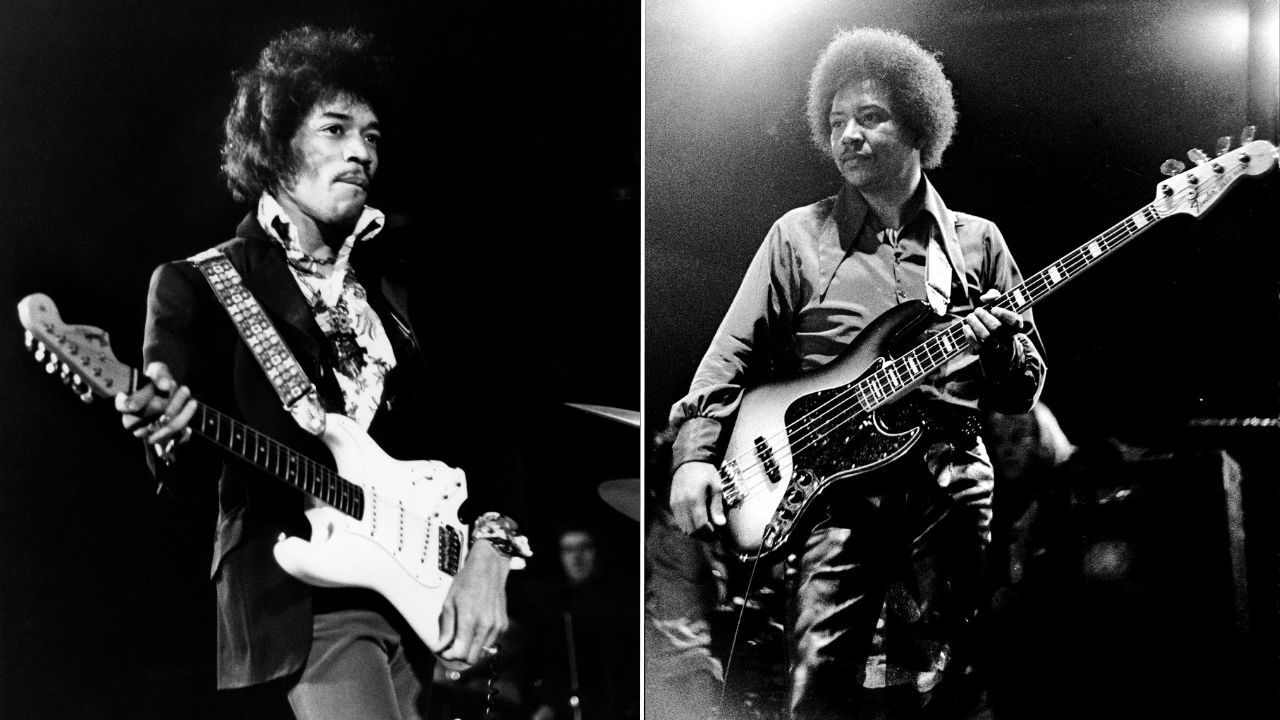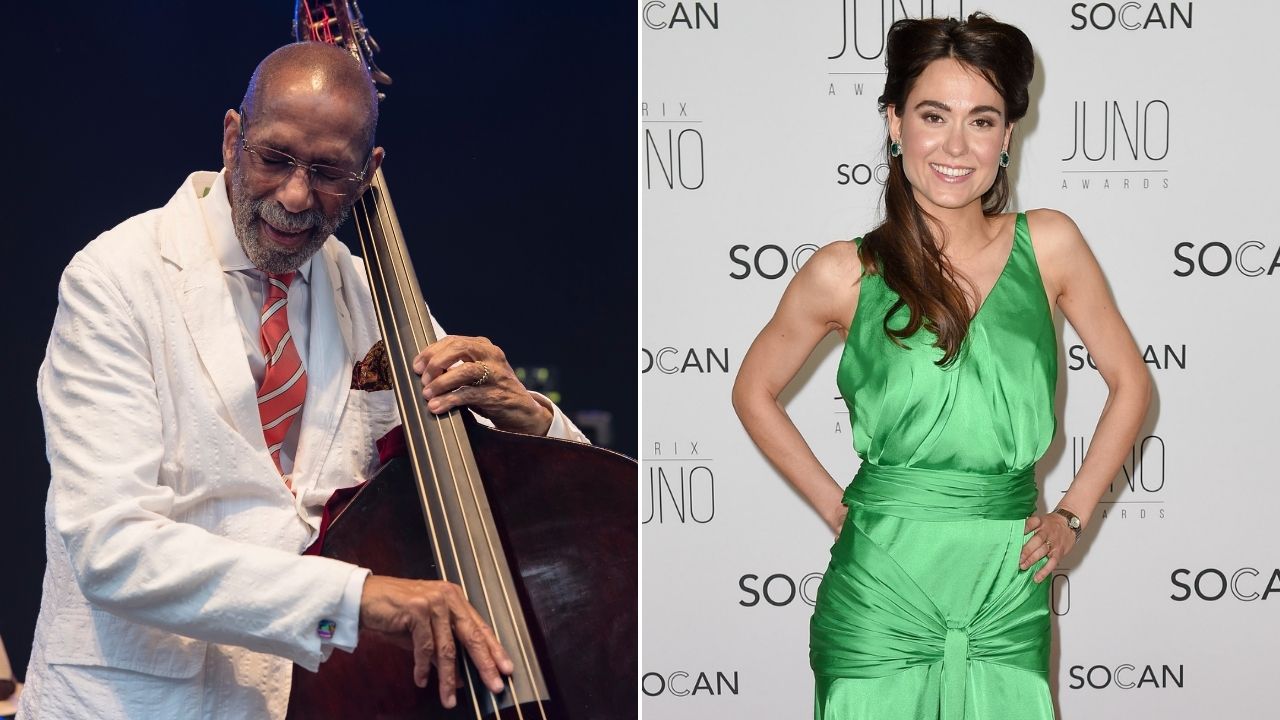"I thought, 'Wait a minute – we never practiced this…'" Jimi Hendrix bassist Billy Cox remembers Woodstock
From the archive: Billy Cox on Hendrix, Band of Gypsys, his influences and that Woodstock show

The Woodstock festival of 1969 remains one of the biggest events in rock ’n’ roll history, with around 500,000 people flooding a dairy farm in Bethel, New York, to see the likes of Janis Joplin and The Grateful Dead. The most enigmatic performance of the weekend came when Jimi Hendrix rolled out an unexpected rendition of the US national anthem. “If you listen to the recording you hear me playing the first five or six notes,” remembers bassist Billy Cox. “Then I thought, 'Wait a minute – we never practiced this.' So I immediately stepped back, and it was bang – such a great thing that Jimi did.”
Onstage with Hendrix during his first serious gigs and for his very last performances, Cox’s low-end support aptly complemented Hendrix’s guitar stratospherics. “A bloody marvellous bass player – has soul and feel for days,” noted Hendrix engineer Eddie Kramer. “Billy was Jimi’s confidante and buddy – and a wonderful human being.”
Cox had found his musical home in 1961 while serving with the 101st Airborne Division at Fort Campbell, Kentucky, which is where he first heard Private Jimmy Hendrix playing guitar inside a service club. “He was out of tune, but I heard something in there,” Billy told BP. “I thought, 'Man, that cat is going to be bad.'” The two were soon gigging in nearby Clarksville, Tennessee, with Cox playing an Army-issue Danelectro and later a Fender P-Bass.
Leaving the service about the same time, the two headed down Highway 41 to Nashville, where their band, the King Kasuals, got work in clubs like Del Morocco and Jolly Rogers. It wasn’t long before Hendrix was touring nationally with acts such as the Isley Brothers, while the less-adventurous Cox stayed behind.
“Jimi joined Little Richard and decided to go to New York,” Billy says. “He called me and said, ‘Hey, man, this guy’s discovered me and is going to take me to Europe and make me a star.’ I said, ‘I can’t go anywhere.' So he said, 'Okay, I’ll make it, and I’ll send for you.’ And that’s what he did."
As promised, ‘this guy’ – Animals bassist Chas Chandler – took Hendrix to London, where they assembled the Jimi Hendrix Experience. For the bass spot they enlisted guitarist Noel Redding, with drummer Mitch Mitchell completing the trio that would record three albums that redefined rock music and rock guitar: Are You Experienced, Axis: Bold as Love, and Electric Ladyland.

Back in Nashville, Cox was gigging and doing studio work, especially gospel sessions for the Excello label. He also played in the house bands for two legendary R&B; TV shows: Noble Blackwell’s Night Train and Hoss Allen’s Dallas-based The Beat. Finally, in April 1969 – with the original Experience falling apart – Hendrix called on his old friend to help him salvage foundering sessions at New York’s Record Plant. Cox joined Jimi in the studio, working on riff-based songs for which they’d laid the groundwork in their earliest jams.
By late 1969 drummer Buddy Miles had replaced Mitchell, working in the studio and joining Hendrix and Cox for a New Year’s Eve performance at the Fillmore East. The resulting live album, Band Of Gypsys, shows Hendrix in full creative command. Afterward the Gypsys disbanded, and with Mitch Mitchell back on drums, the trio (billed as the Experience) toured and recorded tracks that would be assembled a quarter-century later as First Rays of the New Rising Sun. Mixing Hendrix’s new groove-based style with tunes that recalled the earlier Experience, the album finds Cox leading from the bottom as he locks in with Mitchell’s freewheeling drum approach.
“I had the privilege to play bass guitar in Gypsy Sun & Rainbows at Woodstock, the Band Of Gypsys at the Fillmore, and with the Experience,” says Billy. “I played with all three of Jimi Hendrix’s groups. In fact, all four: I played with the King Kasuals when we were back in Nashville.”
All the latest guitar news, interviews, lessons, reviews, deals and more, direct to your inbox!

What made you click musically with Jimi Hendrix?
"I think it was destiny – we all are destined to do whatever. He looked at me and I looked at him, and it was just like we had known each other for a lifetime. We were the same age, and our influences at that time came from here, in Nashville, out of a 50,000-watt clear-channel station called WLAC. Jimi was in Seattle listening to that, and I was in West Virginia and Pennsylvania listening to it."
Do you remember your first shows?
"Fort Campbell was about 60 miles from Nashville, so naturally we both eventually gravitated to that city. But when we came here we found out that it wasn’t what we thought it was. There were opportunities in a lot of small clubs to play blues, but actually it was a country-music town. We played in the black areas and then started going around in the chitlin circuit. These were the little clubs out in the country – on Friday night they had fish and chitlins. Those clubs afforded us the opportunity to have fun and try to make some music."

Did those audiences take to the music you were playing?
"Oh, yeah. At that time, we were just trying to get ourselves together. Every now and then we’d throw in one of our instrumentals, and they’d dance to it because they were in a dancing mood. But we didn’t stay out there too long. We stayed with the basics that people understood."
Who were your influences when you were starting out on bass?
"Wes Montgomery had a brother named Monk Montgomery. He was incredible for that time on electric bass; I bought everything that Monk Montgomery played on. Then I gravitated to Ray Brown, Charlie Mingus – those were the guys of my time on upright bass. There was also Carol Kaye who played on Mission: Impossible. I picked up all of her stuff; she was an excellent electric bass player."
What were you and Hendrix playing when you first started jamming together?
"Songs of that era – Green Onions, Soul Twist by King Curtis, Bill Doggett, Bobby Blue Bland – we enjoyed that. Then we would put some things together of our own, but he would look at me and I would look at him, and he’d say, 'Man, if we played that they would lock us up.' You can hear remnants of that in songs like Dolly Dagger and In From the Storm. They were riffs that we liked playing together, sometimes in unison, sometimes in harmony."
Why didn’t you get songwriting credits for any of those tunes?
"Jimi died before we put it all together. I did it for the love of the music; I wasn’t looking for any credits. Eventually we were supposed to do that, but it just didn’t happen. I lost my friend."
When you played the Fillmore show that became the Band Of Gypsys album, did you have any idea that the music would make such an impact?
"No, but I looked out on the audience during that first show – and when we hit our first note and got into those songs, people were standing there with their mouths wide open. It was funny, the expressions on people’s faces. I think all four of those sets went very, very well. We got enough material and didn’t have to edit anything. We made very few mistakes, and we were feeling it from the head to the toes."
Hendrix liked to tune his guitar down a half-step, and on the Band Of Gypsys material you’re tuned down as well?
"Jimi liked to sing in Eb, so we would tune down to give him room to sing a little better. And it sounds a little bigger. At the time I asked Jimi, 'Why do we tune down?' I remember he said, 'There’s only two us, so we can do what we want.' A lot times he would be out of tune, and I would say, 'Man, you’re out of tune. I guess I am too – I’ll just tune to you.' A lot times we were a whole-step down."
What was it like playing Woodstock?
"That was great; it was the first big gig I played with Jimi. We came around the back way and looked out on that crowd – it was the largest crowd I’d ever played in front of. Mitch said, 'Hell, I don’t know whether I want to go out there!' Jimi said, 'We’ll give to them and they’ll give back to us, and we’ll have a good time.' It was great, it was exhilarating."
In a little over a year Hendrix would be dead. Did you ever tell him to take it easy with the partying?
"I don’t think it was the partying. It was just … to be. If you look at geniuses like Mozart, they don’t live long. They come to do their thing, and then they’re gone.
I gave a speech at the University of Indiana, and I said, 'Every now and then a spirit slips through a portal of time into this reality, and blows our minds.' Jimi’s death devastated me, but then reality kicked in – we all have to do that. I’ll have to make my transition also."
A posthumous live album, Live at Woodstock, featuring Hendrix's iconic interpretation of The Star Spangled Banner, is out now on vinyl, CD and as a digital download.
Richard Johnston was the Editor of both Guitar Player and Bass Player magazines. He is the author of several books on guitar playing, including How To Play Rock Guitar, How To Play Blues Guitar, and Martin Guitars: A History.
- Nick WellsWriter, Bass Player



